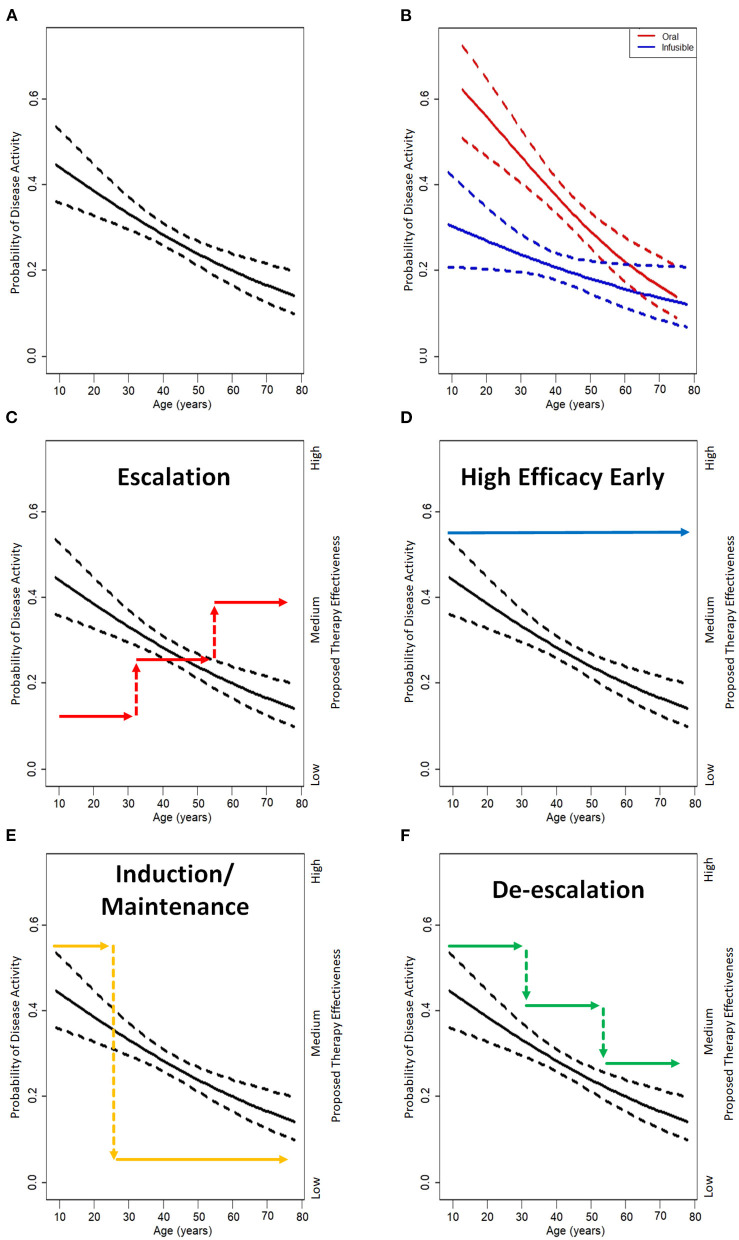Figure 1.
The probability of disease activity decreases over the lifetime of a patient with MS. (A) Probability of disease activity (clinical relapse, new T2 lesions, or enhancing lesions) observed in real-world study of 1,246 patients with MS with 95% confidence interval shown in dashed lines. (B) The probably of disease activity is higher in patients on oral (red; dimethyl fumarate and fingolimod) disease mofifying therapies (DMTs) than on infusible (blue; natalizumab and rituximab) DMTs. This probability is higher in younger patients and becomes non-significant by 54.2 years of age where the confidence intervals overlap. (C) Given the variable probability of disease activity, it is possible to observe that an escalation treatment approach under-treats early and over-treats as patients age resulting in possibly taking on higher risks but receiving little additional benefit from higher efficacy therapies. (D) High efficacy therapy early in the disease course matches the higher probability of disease activity early but can over-treat later in life. (E) Induction is often enough to sustain good efficacy early but some patients may breakthrough over time resulting in the need of retreatment or a maintenance therapy. (F) A de-escalation approach matches disease activity over a lifetime best, but will benefit from the use of better biomarkers to more rationally prompt changes in DMT. Shared decision making remains a crucial component of deciding on treatment approaches.

